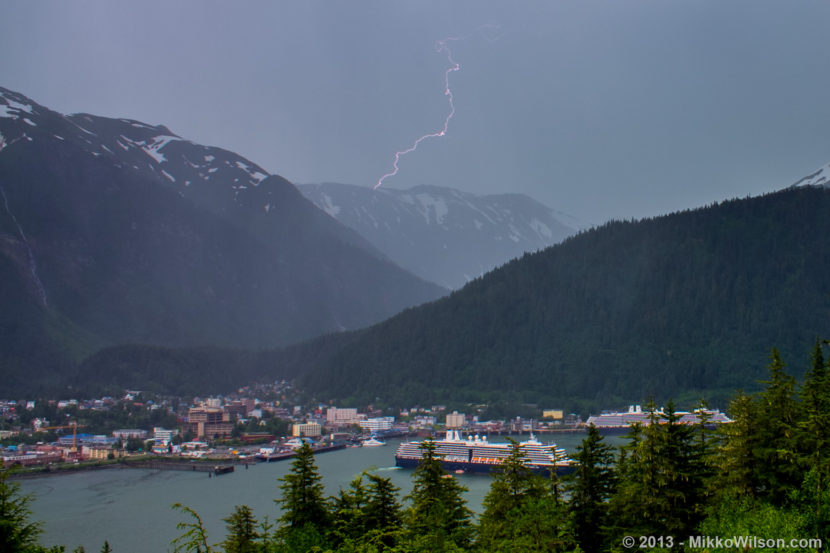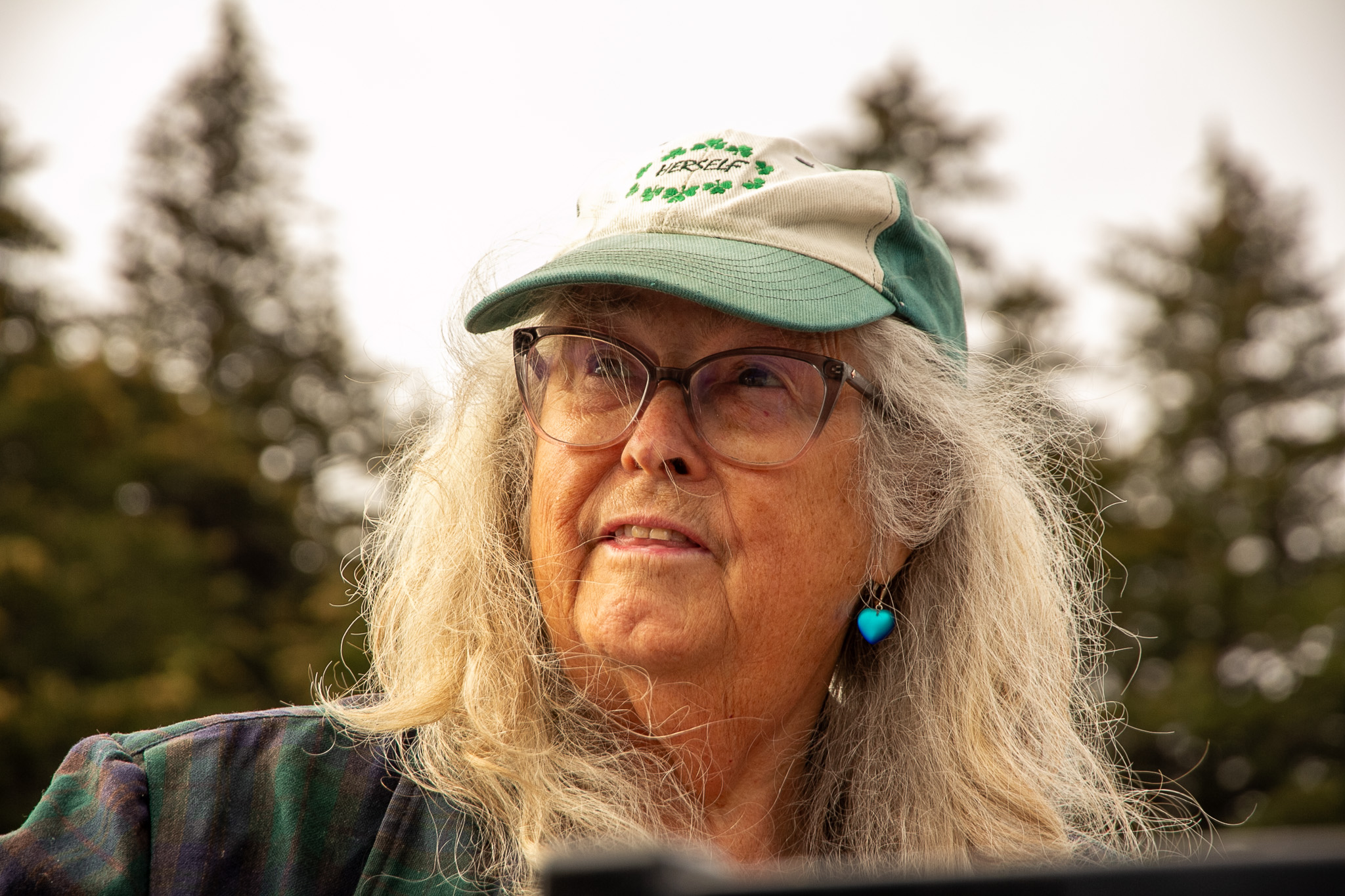ARTICLE AD BOX
 Lightning strikes complete Juneau, June 17, 2013. (Photo by Mikko Wilson)
Lightning strikes complete Juneau, June 17, 2013. (Photo by Mikko Wilson)Last Tuesday afternoon, Juneau climatologist Rick Fritsch was getting fresh for his day displacement erstwhile nan entity darkened suddenly, and nan upwind picked up.
“It was rocking nan trees, thing furious. And my birdhouses were flying, you know, 7 ways till Sunday,” Fritsch said. “So I benignant of knew that thing was up.”
A fewer minutes later, erstwhile he sewage to nan National Weather Service office, a thunderstorm was already successful afloat force.
“And nan agency was conscionable buzzing live pinch activity,” he said.
It was an breathtaking time for Juneau’s meteorologists because thunderstorms seldom hap here. On average, they only hap erstwhile about every 2 years. But connected June 4, each nan correct ingredients came together.
Earlier that day, Fritsch’s colleagues had been search an unseasonable acold beforehand that was hovering precocious successful nan ambiance conscionable southbound of Juneau. Meanwhile, connected nan ground, unsuspecting Juneauites were enjoying a little infinitesimal of sunshine and warmth.
Now, ideate boiling a cookware of water. Cooking up a thunderstorm useful overmuch nan aforesaid way.
“When it’s a sunny day, and nan crushed heats up, that’s nan constituent connected nan stove that’s heating nan cookware of h2o from below,” Fritsch said.
As nan h2o heats up, bubbles of h2o emergence to nan apical of nan pot, while cooler h2o sinks from nan surface. It’s a process called convection. Air does nan aforesaid thing.
On warm, sunny days, bubbles of basking aerial shape adjacent nan crushed and commencement rising. As they climb higher successful nan atmosphere, temperatures cool. Especially erstwhile there’s a acold beforehand for illustration nan 1 we had past week.
When nan aerial bubbles cool off, h2o particles wrong them condense and shape clouds. This process happens complete and complete again. Each recently formed unreality pushes nan 1 that came earlier higher and higher into nan atmosphere.
“And they support going and going and going,” Fritsch said. “That’s really you build a thunderstorm.”
The clouds stack and harvester until, eventually, they shape towering, acheronian grey cumulonimbus clouds.
These large wind clouds are powerful. When they burst, they merchandise a deluge of rain, gusty wind, occasional hail storms — and of course, thunder and lightning.
But nan chaos is usually brief. On June 4, it lasted conscionable astir 30 minutes. That’s because a thunderstorm is its ain worst enemy.
“Basically it kills itself because past it rains out, and it cools nan crushed underneath it,” Fritsch said. “You return distant nan power source. You return distant nan fuel, if you will, for nan thunderstorm.”
And successful Juneau, thunderstorms person a mates of different adversaries.
The first is nan crystal field. It stands betwixt Juneau and British Columbia to nan east, wherever basking stretches successful nan summertime create monolithic thunderstorms. Lightning from these storms has sparked immoderate of the Canadian wildfires that person go truthful prevalent.
But these powerful storms usually can’t make it to Juneau.
“These thunderstorms turn and turn and turn and they get really exciting. And meteorologists get each tripped retired astir it, like, ‘Oh, this is really cool,’” Fritsch said. “And past it hits nan icefield, you return distant nan heat, nan substance source, and it conscionable peters out.”
The large wind deflates.
“All of a abrupt it conscionable turns into a rainstorm, a rainfall shower,” Fritsch said.
The different adversary, Fritsch said, is Juneau’s bluish latitude.
“We unrecorded astatine 58 (degrees) north,” he said. “And physically, nan ambiance is thinner nan person you spell to nan pole.”
At little latitudes, location is simply a thicker furniture of ambiance separating nan aboveground of nan Earth from space. Which intends thunder clouds person plentifulness of room to grow. Near nan equator, they tin get up to 50,000 feet, aliases astir 10 miles, tall.
In Southeast Alaska, nan troposphere — that’s nan portion of nan ambiance wherever astir upwind forms — is only 15,000 to 20,000 feet thick.
“There’s not arsenic overmuch imaginable aliases expertise for nan thunderstorms to really turn to nan constituent wherever they tin manifest, for illustration thing successful Kansas aliases Iowa,” Fritsch said.
So moreover erstwhile thunderstorms do form, they’re typically milder than they mightiness beryllium successful nan Lower 48. In fact, Southeast Alaska has only had 1 terrible thunderstorm informing successful Fritsch’s 18 years forecasting present — successful Misty Fjords, backmost successful 2019.
“The only clip I’ve ever seen it. As a matter of fact, nan only clip since our upwind position has been successful existence,” Fritsch. “And that goes backmost to nan 1890s.”
So if you missed past week’s ray show, you mightiness person to hold a while for nan adjacent one.









 English (US) ·
English (US) ·  Indonesian (ID) ·
Indonesian (ID) ·